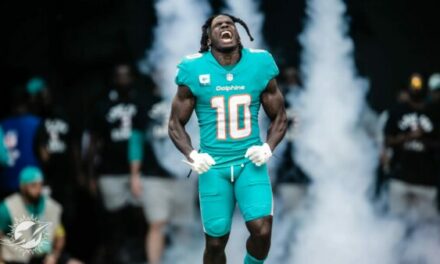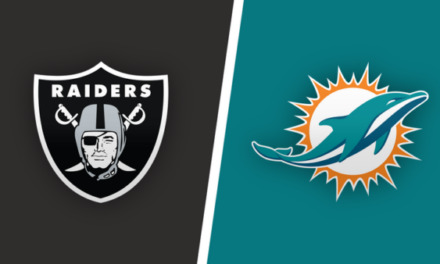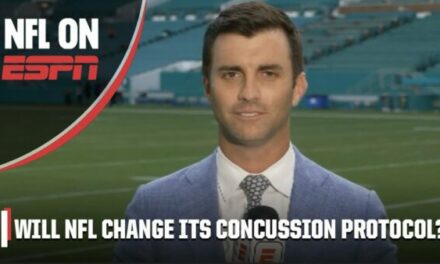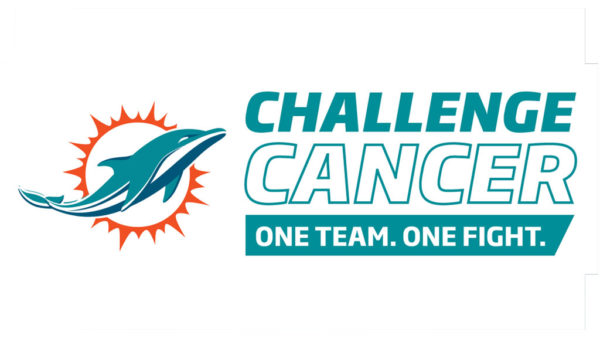The Miami Dolphins offensive journey is a tapestry woven with the threads of triumphs and tribulations, tracing its course through different eras marked by distinct challenges and moments of brilliance. From the Cam Cameron era to the Chad Henne and Ryan Tannehill periods, the franchise’s history is a testament to the resilience and evolution of its offensive strategy. Amidst this backdrop, recent developments led by Mike McDaniel and Tua Tagovailoa have breathed new life into the team’s offensive prospects, culminating in the ascent to becoming one of the NFL’s top-performing offenses last season.
Recalling the Road Traveled
Reflecting on the trajectory of the Dolphins’ offense offers a glimpse into the team’s evolution. The historical narrative traverses through different eras, from the Cam Cameron regime to the Chad Henne and Ryan Tannehill eras, each with its own moments of brilliance and struggles. These periods have been marked by a roller-coaster of offensive performance, showcasing the team’s perseverance through both triumphant highs and challenging lows.
However, amidst this historical context, recent times have unveiled a glimmer of optimism. The emergence of Mike McDaniel as the offensive coordinator, alongside the talents of Tua Tagovailoa, has injected a renewed sense of promise into the team’s offensive prospects, and the previous season witnessed a remarkable ascent, placing the Dolphins’ offense among the NFL’s top performers. This upward trajectory is a testament to the team’s efforts to learn from past experiences, adapt strategies, and harness the potential for a more potent offensive game.
Making Sense of Recent Struggles
In the grand scheme of the Dolphins’ journey, the recent lackluster performances should not cause panic. Rather than viewing the disappointing showing at the Hard Rock Stadium scrimmage and the subdued joint practices with the Atlanta Falcons as red flags, it is essential to interpret these events within a broader context. These instances can be seen as part of the natural ebb and flow of a team’s progression, particularly during the phase of preparation leading up to the upcoming preseason game against the Falcons.
Amidst the journey towards refining their offensive skills, these transitional phases are integral. The team’s focus on experimenting, refining techniques, and testing limits is essential to growth. While the absence of key starters like Tyreek Hill and Tagovailoa might influence the overall performance, these practices serve as valuable learning opportunities. As Mike McDaniel highlighted, the current stage marks a period of honing skills and addressing technical aspects. The challenges faced during these practices are stepping stones toward building a more cohesive and potent offensive unit, and thus, the recent struggles should be viewed with patience and a long-term perspective.
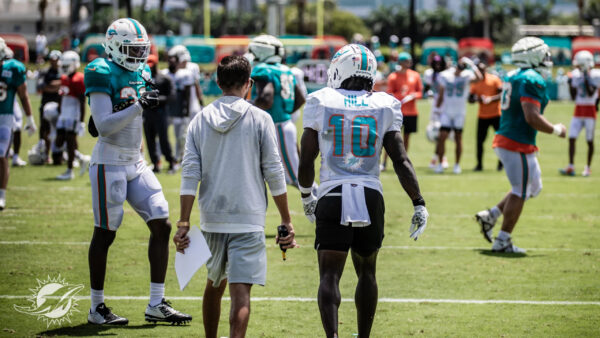
Mike McDaniel’s Perspective
A crucial perspective comes from Mike McDaniel, the team’s offensive coordinator, who offers valuable insights into the recent developments. McDaniel underlines the significance of these practices as a crucial phase for imparting and refining technical nuances as well as philosophical elements of the team’s offensive strategy. While the execution during practices might not always mirror perfection, McDaniel underscores that the true assessment comes when the team steps onto the field during actual games. By confronting challenges and addressing shortcomings during these practice sessions, the team lays the foundation for continuous improvement and growth.
For McDaniel, these practices are more than mere drills – they represent a pivotal juncture for players to internalize lessons, adapt strategies, and fine-tune their skills. Emphasizing that these moments are part of a larger learning process, he asserts that the ability to recognize areas that need improvement and seize opportunities for growth is what ultimately defines a successful team. The challenges encountered during these practices, while occasionally frustrating, are integral to the team’s evolution, as they provide the means to bolster skills and readiness, setting the stage for a more refined and effective offensive performance in the future.
Phase of Experimentation
As the countdown to the regular season opener against the Los Angeles Chargers approaches the one-month mark, the team finds itself in a pivotal phase of experimentation. This juncture presents a unique window to push the envelope of the team’s offensive strategies and capabilities. Recognizing that success on the field often stems from innovative approaches, the team embraces this time as an opportunity to test the limits of their offense. During these moments, we witness a departure from the norm, as Tua Tagovailoa collaborates with less established receivers, signaling a commitment to evolving the playbook and enhancing adaptability.
In light of the upcoming challenges of the regular season, the coaching staff seizes this period as an occasion to delve into unexplored areas, paving the way for dynamic developments. The consistent rotation of players in key positions, such as left guards and tight ends, speaks to a deliberate attempt to identify optimal combinations that can thrive in various scenarios. While the outcomes of these experimental practices might not translate to immediate success, they lay the groundwork for a more versatile and resilient offense, poised to navigate the unpredictable terrain of the regular season with a greater repertoire of strategies and solutions.
Setting Realistic Expectations
As the Miami Dolphins navigate through these practice sessions, it is imperative to grasp the underlying purpose driving their approach. While the immediate objective might seem to be delivering standout performances akin to the impending NFL season, the true essence lies in recognizing that these practices serve a different purpose altogether. The emphasis isn’t on displaying flawless execution or achieving peak performance; instead, it is about orchestrating a process of fine-tuning and evolution that underpins the team’s long-term development strategy.
In this light, these practices become less about chasing immediate victories and more about nurturing the growth and adaptability of the team as a whole. The coaching staff and players are crafting a dynamic, resilient framework that will unfold over time. This process is akin to tending to a garden, where each practice is a carefully calculated step towards cultivating a team that thrives not only in the glare of the spotlight but also during the quieter moments of preparation and growth. These sessions are opportunities to test boundaries, push limits, and learn from setbacks, ultimately laying the foundation for a team that’s not only ready for the challenges of the forthcoming NFL season but also equipped for the broader journey of sustained excellence.
Factor of Terron Armstead’s Absence
The absence of Terron Armstead, a Pro Bowl left tackle, due to his ongoing recovery from injury is significant in shaping the dynamics of the Miami Dolphins’ practices. Armstead’s limited participation has prompted the team to make strategic adaptations to its training regimen. While his absence may seem like a challenge, it’s also an opportunity for the coaching staff to explore alternative strategies and test the versatility of the team’s offensive line.
Terron Armstead’s presence on the field is undeniable, but his absence serves as a reminder of the ever-evolving nature of football. In his stead, the coaching staff is tasked with evaluating different line configurations and refining their tactics. This phase of experimentation, necessitated by Armstead’s recovery, isn’t just about compensating for his absence but also about building depth and flexibility in the roster. As the team works through this adjustment, it is an exercise in resilience, adaptability, and problem-solving—qualities that are invaluable in navigating the complex landscape of professional football.
Learning from Setbacks
Interceptions and moments of uneven play have become conspicuous aspects of recent practice sessions for the Miami Dolphins. While these instances might raise concerns, viewing them as part of the broader learning process within the context of simulated game scenarios is crucial. These practice settings replicate game-like situations, allowing players, especially Tua Tagovailoa, to gain invaluable insights into their decision-making processes under pressure.
The interceptions and challenges faced by players during these practices serve as teaching moments that contribute to their growth. Facing adversity in a controlled environment provides an opportunity to identify areas of improvement and refine strategies. For Tagovailoa, these experiences contribute to his maturation as a quarterback, enabling him to fine-tune his reads, adapt to defensive schemes, and make split-second decisions that can be the difference between a successful play and a turnover. Learning from these setbacks is essential for Tagovailoa’s development, as it equips him with the tools to navigate challenges on the field and elevate his overall performance.

